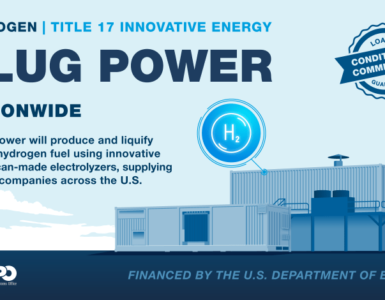Cummins: Gray to green, carbon-neutral hydrogen applications you might not know about. Hydrogen has numerous applications that you may not be as familiar with, and it’s these applications that hold the potential to completely transform the way the world uses power – and what our carbon footprint looks like while doing so.
Decarbonizing industries with hydrogen is no simple task, but major progress is being made in turning “gray” hydrogen (some associated emissions) into “green” hydrogen (zero emissions). Read on to learn more about the different ways hydrogen can power our world with zero emissions.
Power Grid Balancing
Similar to the concept of supply and demand in economics, an electrical grid also deals with differences between its power supply and the power demanded of it. Electrical grids can’t tailor their power output to how many people are blow drying their hair, turning on their dishwasher or turning on their Christmas lights at any given moment. That’s good news because it means you’ll almost always have power available to you when you need it, but it’s also bad news because it means a lot of power generation capacity can be underutilized at times.
🔥 What about we co-host a webinar? Let's educate, captivate, and convert the hydrogen economy!
Hydrogen Central is the global go-to online magazine for the hydrogen economy, we can help you host impactful webinars that become a global reference on your topic and are an evergreen source of leads. Click here to request more details
That’s where electrolyzers come in. Electrolyzers can be used to balance the electrical grid and get compensated for doing so. Excess energy from the electrical grid can be used to power electrolyzers, which make hydrogen. Hydrogen can store this excess energy and be used in a number of applications without emissions. Because this is a paid service that the electrolyzer offers to stabilize the electrical network, this helps to reduce the total cost of hydrogen.
But it doesn’t stop at electrical grids. Hydrogen generation can also be used as a means of storing fluctuating power from renewable energy sources. One of the limiting factors of solar is that they are not always available when we need them and sometimes, this means valuable power is wasted.
Once again, electrolyzers come to the rescue. Excess (clean) energy from renewable sources like wind and solar can power electrolyzers to make green hydrogen without any associated emissions. As more fluctuating renewable energy sources get added to power grids, electrolyzers and hydrogen will prove even more vital in the production of green hydrogen. The hydrogen produced allows this clean renewable energy to be used to fuel heavy-duty bus, truck or commuter train fleets and decarbonize the natural gas grid. As more fluctuating renewable energy sources get added to power grids, electrolyzers and hydrogen will prove even more vital in the production of green hydrogen.
Power to Gas
Even applications that don’t run on hydrogen fuel cells can benefit from lower emissions because of hydrogen. One way to do this is injecting the natural gas pipeline with hydrogen. Think of it as a gas cocktail — the same way you might add club soda to make a drink a little lighter, hydrogen can be added to natural gas to lower its carbon content and reduce its carbon emissions.
Cummins and Enbridge announced at the end of 2020 that the hydrogen we produce to balance the grid will be injected in the natural gas pipeline network in order to “green” the gas supply. Emissions regulations worldwide are changing, and soon some countries and states may impose a minimum percentage of renewable natural gas required in the natural gas grid. This minimum percentage is bound to increase over time, demanding practical solutions like hydrogen blending.
Sustainable Fertilizer
As our world continues to reckon with a climate crisis, it’s become evident that we need to pursue greener hydrogen from every angle possible, including its use in agriculture.
The ammonia industry is one of the biggest consumers of hydrogen across the world. Around half of the current worldwide production of hydrogen is used to make ammonia, which, in turn, is principally used to make fertilizers. Since more than 95% of the world’s hydrogen is produced using fossil fuels, also known as grey hydrogen, the production of ammonia is responsible for nearly 2% of annual global carbon dioxide emissions!
The good news is that replacing the gray hydrogen used in the production of fertilizer with green hydrogen (made through zero-emission electrolysis) would produce a truly sustainable fertilizer.
The interest in reducing the carbon intensity of fertilizer is growing. With regulatory incentives and carbon taxes, this shift to using green will accelerate — making it a cost-effective alternative that’s better for the environment and the agriculture industry.
READ the latest news shaping the hydrogen market at Hydrogen Central
Greener Ethanol and Methanol
Ethanol is currently used to reduce emissions of the gas that powers cars and other vehicles that have traditional gas engines. Most gas that powers cars and trucks (excluding diesel) in the U.S. contains up to 10% ethanol — some fuel made for E-85 compatible engines contains up to 85% ethanol. Ethanol is usually made by fermenting feedstock like corn, especially in places like the Midwest where corn is abundant.
Our opportunity to create greener ethanol, though, lies in the production of ethanol or methanol from carbon and hydrogen. Similar to ammonia, the hydrogen in ethanol comes mostly from natural gas, which generates carbon emissions that are harmful to the environment.
With the right technology and infrastructure, the gray hydrogen that goes into ethanol can be replaced with green hydrogen. This can lower the carbon emissions of the gas we use to power cars, trucks and anything running on a gas engine.
You may be more familiar with ethanol than you think. It’s actually alcohol — yes, the kind you can drink! If distilled multiple times, the same ethanol that can make our gasoline more green can be consumed in a drink. We’re speaking chemically here, of course, so don’t go trying this at home and please leave it to the professional distillers. In fact, a company called the Air Co. makes a carbon-negative vodka from air and green hydrogen. On the other hand, methanol is a non-drinking type of alcohol with various traditional applications such as in the chemical sector (paint, fleece, plywood, etc.) blended to make cleaner fuels and used to produce energy when used as a fuel. One of the benefits of methanol is that it is much easier to transport than hydrogen in gaseous or liquid form, therefore, companies around the world are looking at exporting green methanol as a commodity.
Carbon-neutral Jet Fuel
Green hydrogen isn’t limited to ground-level applications and it has the potential to power a Boeing 737. With the right engineering, planes could fly on jet fuel made from a process of combining CO2 captured from the air and green hydrogen.
While it may not be 100% green from well to wheel — turbine combustion will create some emissions — the difference is that it is carbon-neutral fuel, meaning the CO2 captured in producing the fuel is released during combustion, so there is no net CO2 released. In short, we could soon see green jet fuel in the “well” part of the equation — aeronautical engineering is still working on greening the “wheel” half.
It’s evident that the “green equation” is quite complicated. There are a lot of factors that go into establishing hydrogen as one of many potential solutions to reducing worldwide fossil fuel emissions and ultimately mitigating the climate crisis.
But where there are questions, there are answers to be found — and Cummins is up for the challenge. Over the past century, we’ve ushered in new technologies that others didn’t believe in or found impractical or even impossible. With 100 years of experience in innovation and a commitment to developing sustainable power, Cummins is all in on hydrogen as a power solution for the future.
Gray to green: carbon-neutral hydrogen applications you might not know about, Mar 17, 2021








